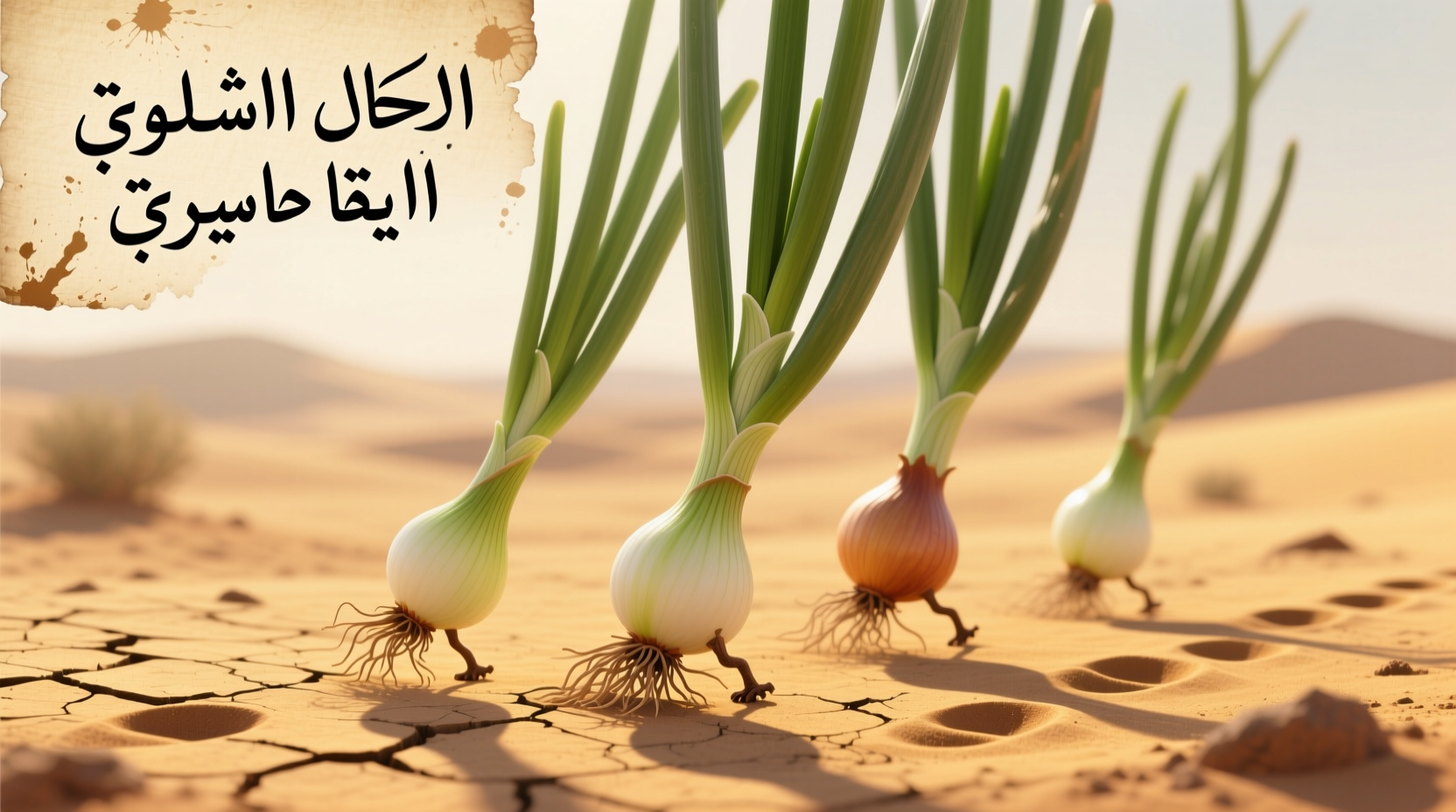Forget complicated gardening routines—Egyptian walking onions thrive with almost no intervention once established. These resilient alliums produce edible green shoots in early spring, develop distinctive top bulblets by midsummer, and deliver small underground bulbs by fall. Unlike standard onions, they return reliably each year in USDA zones 3-10, providing continuous harvests for decades with proper care.
What Makes Egyptian Walking Onions Unique?
Despite their misleading name, Egyptian walking onions (Allium proliferum) aren't from Egypt but likely originated in Central Asia. Their "walking" behavior comes from the weight of mature bulblets bending the stalk until they touch soil and root. This natural propagation creates expanding colonies over time.
| Feature | Egyptian Walking Onion | Common Onion (Allium cepa) |
|---|---|---|
| Reproduction Method | Top bulblets + underground bulbs | Seeds or sets only |
| Lifespan | Perennial (15+ years) | Annual |
| Harvest Period | Year-round (greens in spring/fall, bulbs in summer) | Single seasonal harvest |
| Cold Hardiness | USDA zones 3-10 | Varies by variety |
Historical Journey of Allium proliferum
Egyptian walking onions have traveled quietly through gardens for centuries. Historical records show their presence in European cottage gardens by the 16th century, though their exact migration path remains unclear. The USDA's Agricultural Research Service documents note their widespread cultivation across North America by the 1800s, carried by settlers who valued their reliability.

Step-by-Step Growing Guide
Establishing your walking onion patch takes minimal effort but delivers decades of harvests:
- Planting (Best in early fall): Set individual bulblets 1-2 inches deep, 6-8 inches apart in well-draining soil with full sun exposure
- First-year care: Water regularly until established, then reduce to 1 inch per week during dry periods
- Propagation: Allow bulblets to mature and bend naturally—don't cut flower stalks prematurely
- Division: Every 3-5 years, dig and separate overcrowded clumps in early spring
Harvesting and Culinary Uses
Walking onions offer three edible components throughout the year:
- Green shoots: Harvest in early spring (similar to scallions) or fall—mild onion flavor with garlic undertones
- Top bulblets: Pick when firm but still green for pickling, or let mature for planting
- Underground bulbs: Harvest in late summer—smaller than commercial onions but intensely flavored
Chef's tip: Use green shoots in salads and omelets, while mature bulbs excel in soups and stews. The National Gardening Association recommends storing harvested bulblets in mesh bags in a cool, dry place for up to 6 months.
Managing Growth Boundaries
While remarkably adaptable, walking onions have specific environmental preferences:
- Climate limitations: Struggle in consistently hot climates (above 90°F/32°C) but tolerate extreme cold down to -40°F
- Soil requirements: Prefer pH 6.0-7.5 but grow in most soil types except waterlogged conditions
- Sun exposure: Need minimum 6 hours of direct sun—produce fewer bulblets in partial shade
- Containment strategy: Plant in bottomless containers sunk into soil to prevent excessive spreading
Troubleshooting Common Issues
These hardy plants rarely face serious problems, but watch for:
- Thrips infestation: Treat with insecticidal soap at first sign of silvery leaf streaks
- Reduced bulblet production: Usually indicates insufficient sunlight or overcrowding
- Yellowing leaves: Often caused by overwatering—reduce irrigation immediately
- Fungal issues: Improve air circulation and avoid overhead watering during humid periods
Frequently Asked Questions
Are Egyptian walking onions actually from Egypt?
No, despite their name, Egyptian walking onions likely originated in Central Asia. The name probably comes from historical trade routes where they were mistakenly associated with Egypt. Historical records show their presence in European gardens by the 16th century.
How do I prevent walking onions from taking over my garden?
Plant them in bottomless containers sunk into the soil (12-18 inches deep) to contain root spread. Alternatively, harvest bulblets before they bend to the ground, or create physical barriers using landscape fabric buried 12 inches deep around the planting area.
Can I grow Egyptian walking onions in containers?
Yes, but use containers at least 12 inches deep and 14 inches wide. Container-grown plants require more frequent watering and benefit from monthly applications of balanced liquid fertilizer during growing season. Expect smaller bulblet production than in-ground plants.
How long do established walking onion plants last?
Properly maintained walking onion patches can thrive for 15-25 years or longer. The USDA Agricultural Research Service has documented heirloom patches still productive after 30+ years through proper division every 3-5 years and adequate spacing.











 浙公网安备
33010002000092号
浙公网安备
33010002000092号 浙B2-20120091-4
浙B2-20120091-4